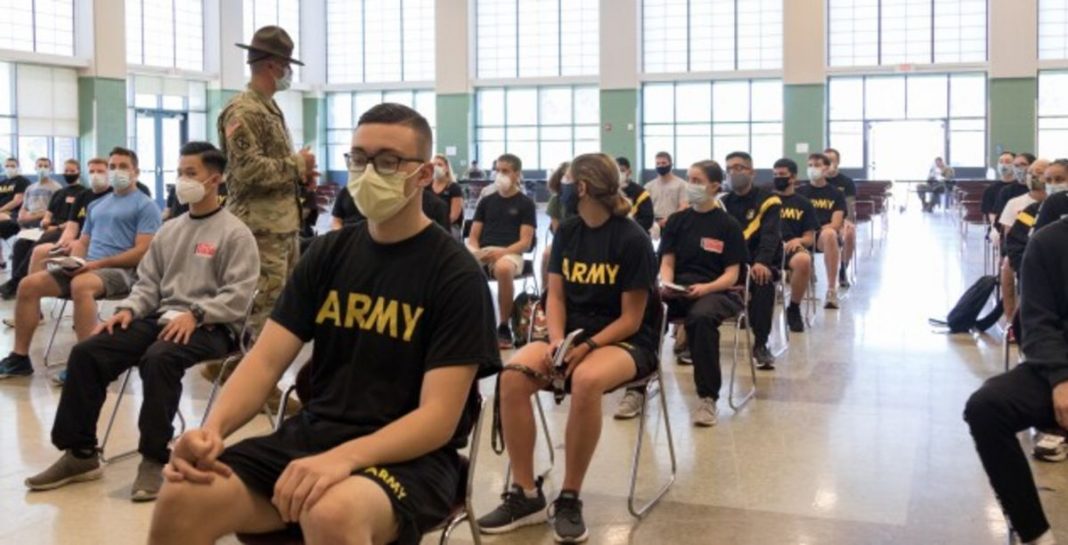An updated budget plan would see the Army’s troop strength dip below 1 million troops for the first time in more than 20 years, as authorities seek to recruit new soldiers in response to the coronavirus outbreak.
The active-duty Army would be reduced from the 485,000 troops approved by Congress for this year to 473,000 soldiers in fiscal 2023, a loss of 12,000 soldiers. This is part of the service’s proposed fiscal 2023 budget. In all, 998,500 troops would be available for duty if the National Guard and Reserves remained at their current levels.
As part of its transition from two decades of counterterrorism missions in Afghanistan and the Middle East, the Army seeks to fortify itself against challenges posed by China in the Pacific region and Russia in Eastern Europe as a result of Vladimir Putin’s invasion of Ukraine. The Army is the largest of the United States military services.
The “pro-active” decision was motivated by a desire to attract high-quality troops without compromising standards, rather than a desire to free up funds in the budget, according to Gabe Camarillo, the Army’s undersecretary of personnel and readiness.
“We did not want to take any decrease in our quality as we looked ahead at recruiting projections,” Camarillo said at a Pentagon roundtable, adding that the Army is focusing on high-quality talent who can operate within the Army’s “cutting-edge” formations.
When it comes to carrying out its foreign policy and defending strategic interests, the United States relies on a robust, all-volunteer military. Especially as operations move into new domains like as cybersecurity, artificial intelligence, and hypersonic weapons, and as China and Russia challenge the United States’ global leadership position, a scarcity of skilled recruits might become a significant national security handicap.
For years, the Army has struggled with recruitment issues and has worked hard to personalise its recruiting and advertising operations in order to attract the finest candidates. Education, physical and mental health, and criminal records deficiencies have all contributed to the Army’s shrinking pool of possible recruits. According to the Army’s statistics, almost four out of every five Generation-Zers were born after 1997 and so do not qualified to serve in the major military service.
The numbers of National Guard and Reserve members are not expected to decrease and are forecast to remain at 336,000 and 189,500, respectively, for fiscal 2023 – the same levels approved for this year.
The Army is proposing $178 billion for fiscal year 2023, representing a $2.8 billion increase above the levels authorised by Congress this year. The topline figure reflects “a mix of actual growth and inflation,” according to Maj. Gen. Mark Bennett, the Army’s head of budget and planning.
The Army will continue with all of its modernization initiatives, including many that will be delivered to units this year, such as the Armored Multi-Purpose Vehicle, which is manufactured by BAE Systems Plc., and the Long-Range Hypersonic Weapon, which is manufactured by Lockheed Martin Corp.
During the same discussion, Douglas Bush, the Army’s senior procurement officer, said, “The Army is presenting a very balanced approach overall that does not take unnecessary risks and keeps the momentum moving forward.” According to Bush, the Army made a “conscious decision” to reduce funding levels for projects such as the Abrams tank and the Stryker vehicle, both of which are manufactured by General Dynamics Corp. He went on to say that the choice was taken “prudently” and that it maintains a level that would keep the industrial base operating and “healthy,” as he put it.
Specifically, the Army procurement account would be reduced from $22.8 billion this year to $21.3 billion in fiscal 2023, according to the proposed budget. Research and development spending would also be reduced from $14.5 billion this year to $13.7 billion in the fiscal 2023 budget, down from $14.5 billion in the current year.
The Army’s personnel account will be increased to $69.1 billion, representing a $3.2 billion increase, or over 5 percent, above the $ 65.9 billion allowed for this year, according to the Army. According to Army papers, the account entails a 4.6 percent increase in pay. It also contains $1.8 billion in unique pay incentives to help attract and retain top-tier employees and executives.

